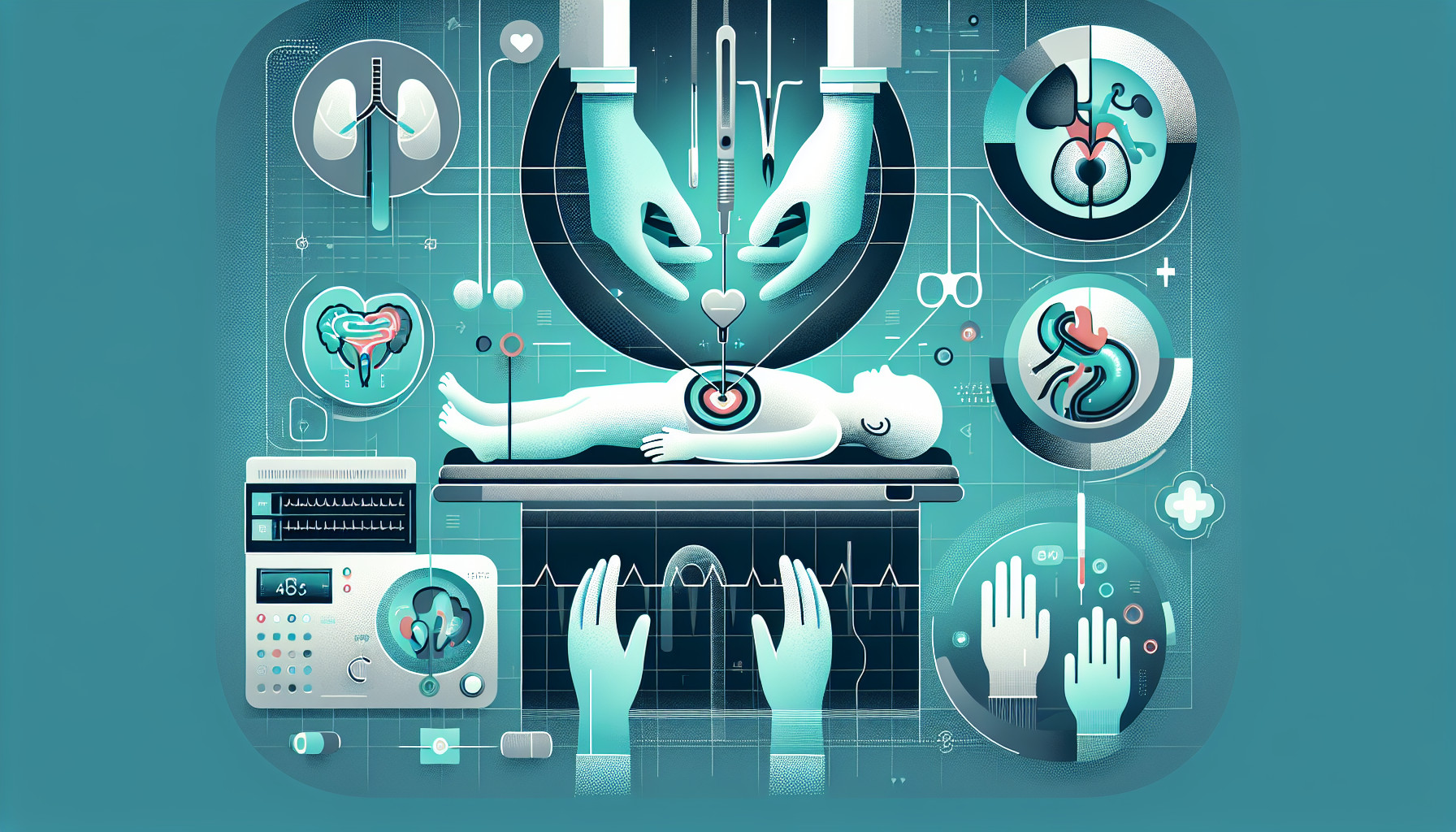Our Summary
This research is about a surgical procedure called laparoscopic needle-assisted repair (LNAR), which is used to treat inguinal hernias in children. The study looked at more than a thousand children who underwent this procedure between 2009 and 2017 and checked how they were doing up until 2019.
The study found that the procedure is safe and effective. The chance of the hernia coming back after the operation was less than 1%. It was also found that premature babies who had the surgery less than 60 weeks after they were conceived had an even lower chance of the hernia returning.
The study also compared LNAR to other types of surgery for hernias and found that it had similar rates of complications. However, the researchers suggest that premature infants might do better with LNAR than with other methods.
In conclusion, LNAR is a reliable option for treating inguinal hernias in children, including those who are born prematurely.
FAQs
- What is laparoscopic needle-assisted repair (LNAR) and what condition does it treat in children?
- What were the findings of the research on the safety and effectiveness of LNAR for treating inguinal hernias in children?
- Is the LNAR procedure recommended for premature infants with hernias, and why?
Doctor’s Tip
A helpful tip a doctor might tell a patient about pediatric hernia repair is to follow post-operative care instructions carefully to ensure proper healing and reduce the risk of complications. This may include keeping the surgical area clean and dry, avoiding strenuous activity, and attending follow-up appointments as scheduled. Additionally, it is important for parents to monitor their child for any signs of infection or recurrence of the hernia and to contact their healthcare provider if any concerns arise.
Suitable For
Patients who are typically recommended pediatric hernia repair include children who have inguinal hernias, which are the most common type of hernia in children. Inguinal hernias occur when a portion of the intestine or other tissue protrudes through a weak spot in the abdominal wall in the groin area. Pediatric hernia repair is often recommended for children with symptomatic hernias, meaning they are experiencing pain, discomfort, or other symptoms related to the hernia.
In addition, pediatric hernia repair may be recommended for children with incarcerated hernias, which occur when a portion of the intestine becomes trapped and cannot be pushed back into the abdominal cavity. This can lead to serious complications such as bowel obstruction or strangulation, which require immediate surgical intervention.
Overall, pediatric hernia repair is typically recommended for children who are experiencing symptoms related to their hernia or who are at risk for complications due to the hernia. It is important for parents to consult with a pediatric surgeon to determine the best course of treatment for their child’s specific situation.
Timeline
Before pediatric hernia repair:
- A child may experience symptoms such as a bulge in the groin area, pain or discomfort, and vomiting
- The child will undergo a physical examination by a healthcare provider to confirm the presence of a hernia
- Diagnostic tests such as ultrasound may be performed to confirm the diagnosis
- The healthcare provider will discuss treatment options with the child’s parents or guardians, including the possibility of surgery
After pediatric hernia repair:
- The child will undergo laparoscopic needle-assisted repair (LNAR) surgery to repair the hernia
- The child will be monitored in the hospital for a period of time after the surgery to ensure there are no complications
- The child will be discharged home with instructions for post-operative care, including restrictions on physical activity and wound care
- Follow-up appointments will be scheduled to monitor the child’s recovery and ensure the hernia does not return
- The child can gradually return to normal activities as advised by their healthcare provider
Overall, pediatric hernia repair with LNAR is a safe and effective procedure for treating inguinal hernias in children, with low rates of complications and a low chance of the hernia recurring.
What to Ask Your Doctor
- What are the risks and potential complications associated with pediatric hernia repair surgery?
- What is the success rate of the laparoscopic needle-assisted repair (LNAR) procedure compared to other surgical methods for pediatric hernia repair?
- How long is the recovery period after pediatric hernia repair surgery, and what can be expected during the recovery process?
- Are there any specific guidelines or restrictions that need to be followed post-surgery to ensure optimal healing and prevent complications?
- How soon after the surgery can the child resume normal activities, such as sports or physical education classes?
- Are there any long-term effects or implications of pediatric hernia repair surgery that parents should be aware of?
- What is the likelihood of the hernia recurring after the surgery, and what steps can be taken to minimize this risk?
- Are there any specific signs or symptoms that parents should watch for after the surgery that may indicate a complication or issue with the healing process?
- How frequently should follow-up appointments be scheduled after the surgery to monitor the child’s progress and ensure proper healing?
- Are there any lifestyle changes or modifications that may need to be made following pediatric hernia repair surgery to prevent future hernias or complications?
Reference
Authors: Garcia DI, Baker C, Patel S, Hebra AV, Cina RA, Streck CJ, Lesher AP. Journal: J Pediatr Surg. 2021 Jan;56(1):121-125. doi: 10.1016/j.jpedsurg.2020.09.022. Epub 2020 Nov 4. PMID: 33246576
